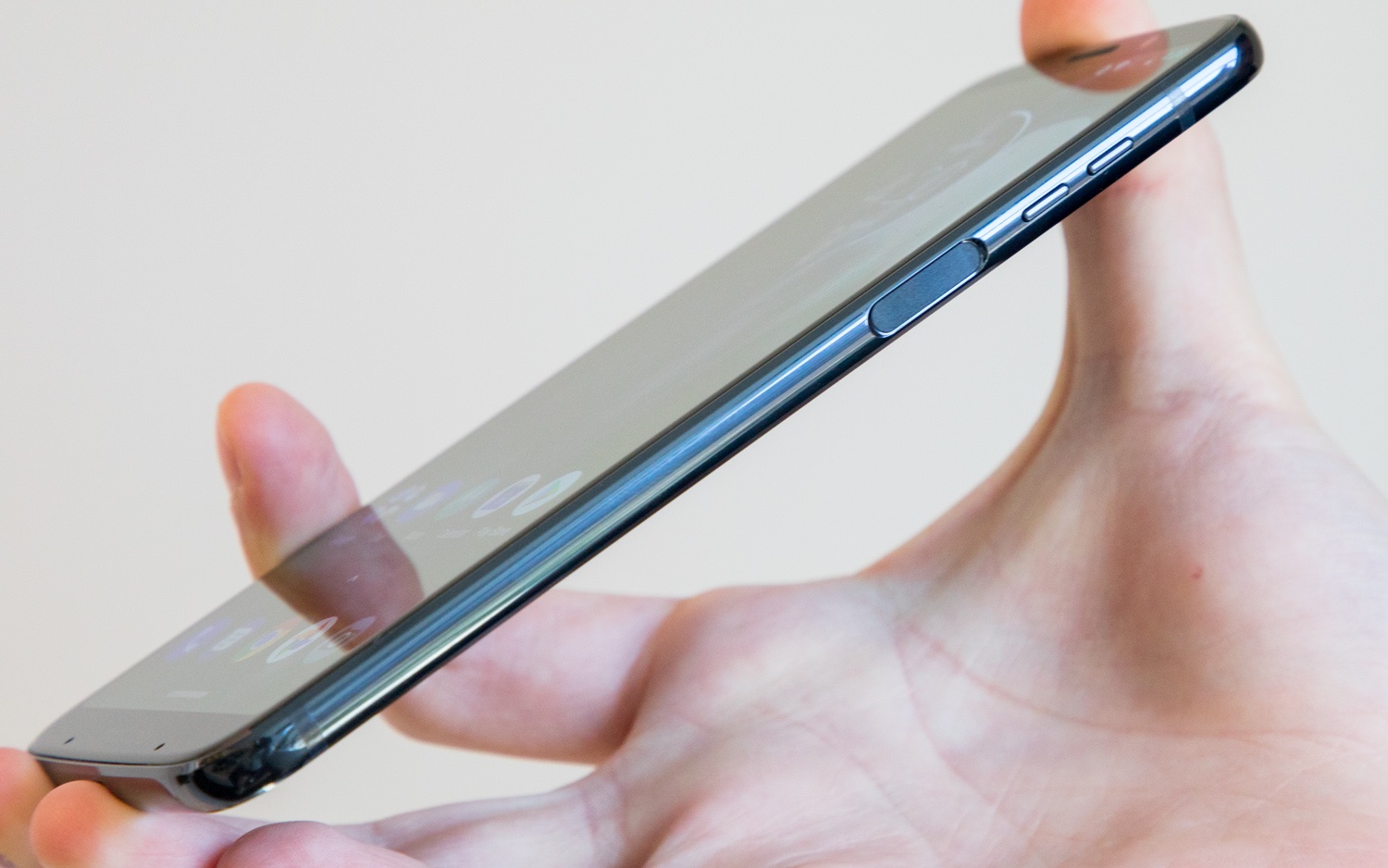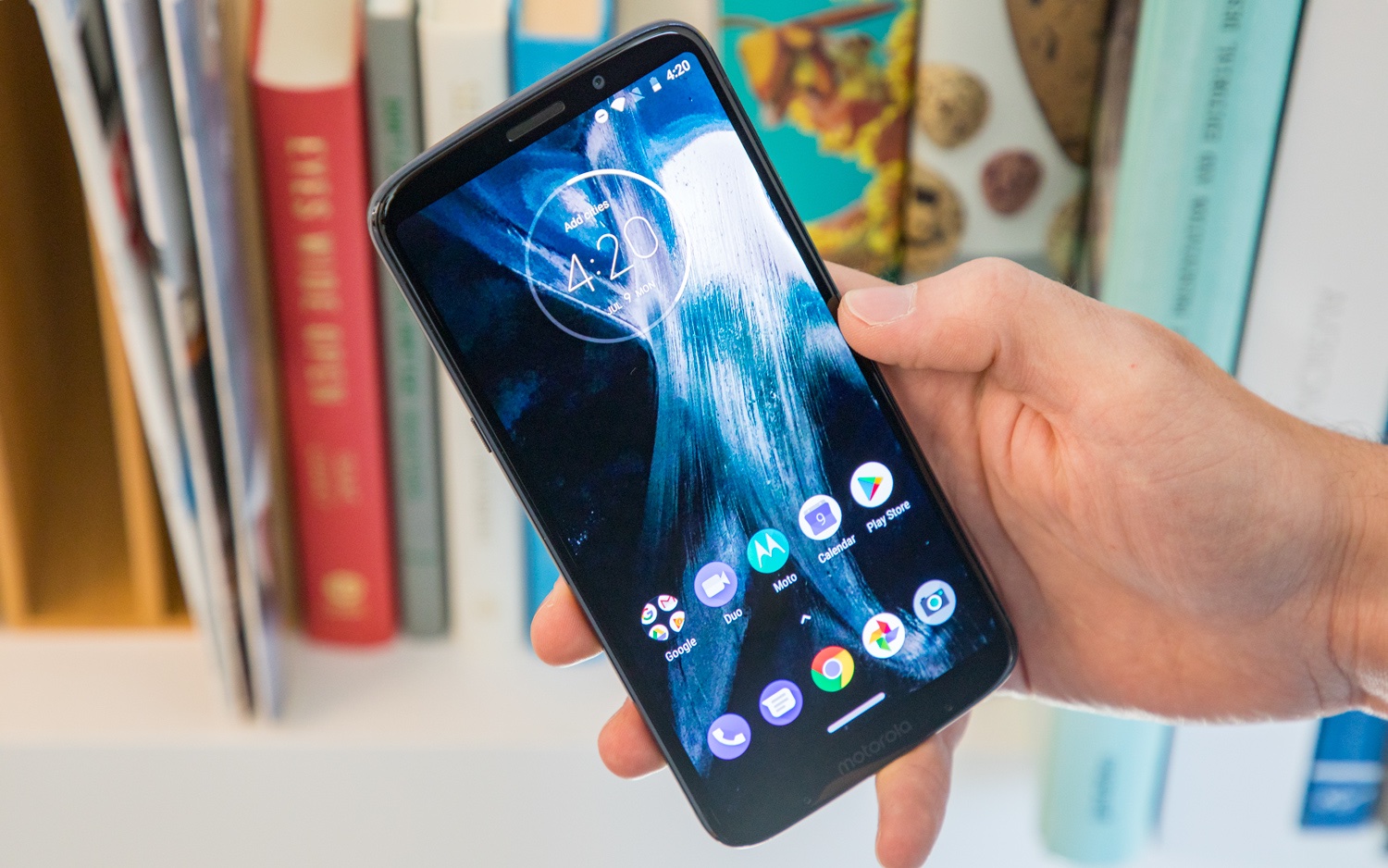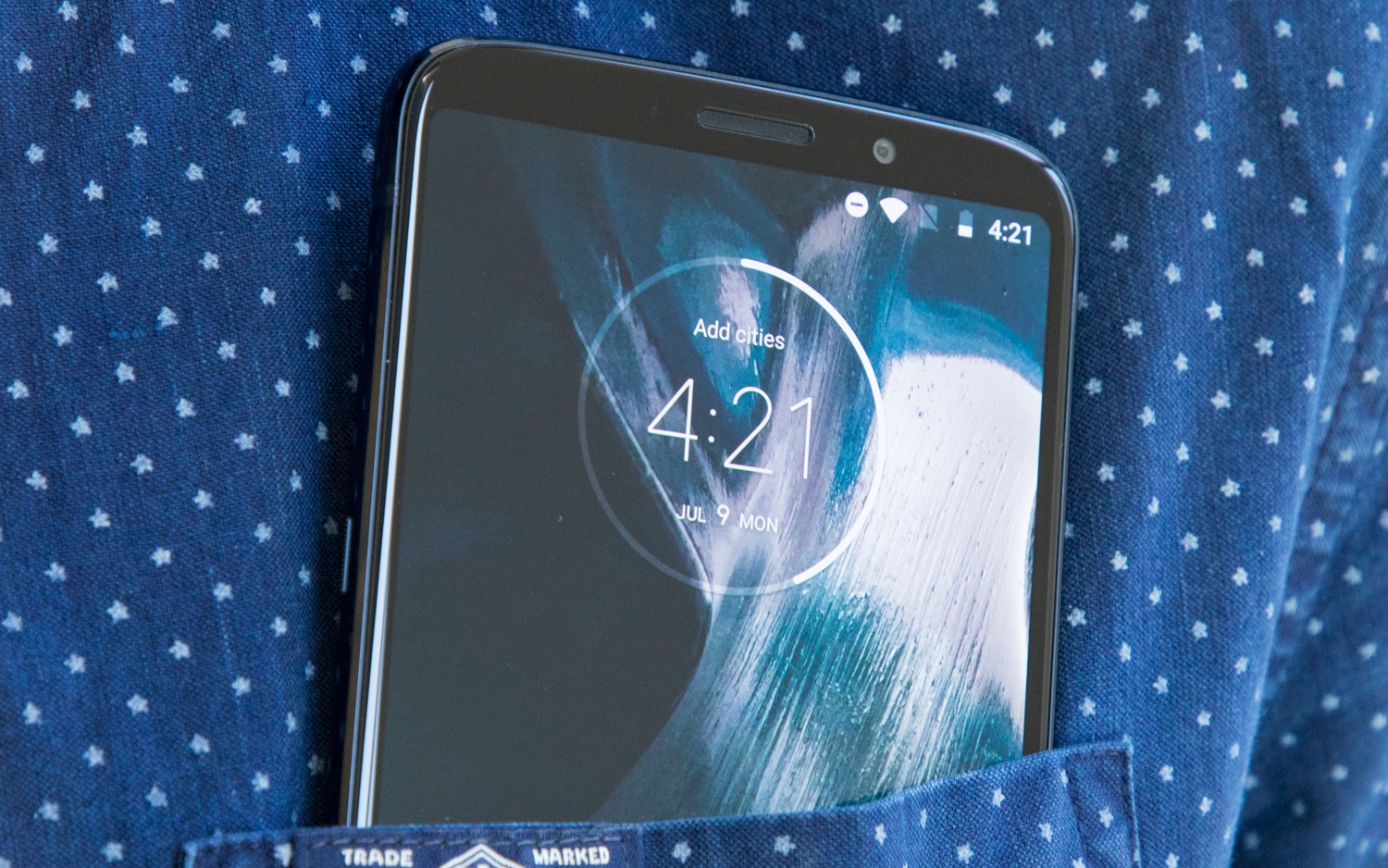Tom's Guide Verdict
The Moto Z3 Play's stunning cyan exterior and ecosystem of mods dress up average performance, battery life and photography.
Pros
- +
Works on all carriers
- +
AMOLED display
- +
Attractive, thin design
- +
Comes with Power Pack mod
Cons
- -
No headphone jack
- -
Performance is just okay for the price
- -
No water resistance
- -
Poor low-light shots
Why you can trust Tom's Guide
While other companies have given up on the modular smartphone dream, Motorola remains committed. With the Moto Z3 Play, we've reached the third generation of Moto Mods — a platform that has given rise to a variety of snap-on accessories that work with every model in the Moto Z family, even dating back to the original phone released back in 2016.
At $499, the Z3 Play offers a relatively inexpensive entry point to that ecosystem of add-ons, which has grown slowly but steadily over the past two years. The Z3 Play is also offered at a great price for a phone with an AMOLED display and a superthin, aluminum-and-glass design. But none of those advantages quite excuse the Z3 Play's shortcomings, which keep it from being on our list of the best smartphones — though it gets awfully close.
Price and availability
The $499 Moto Z3 Play sits comfortably in that middle-to-high-end niche of the market occupied by the $529 OnePlus 6, $499 Honor View 10 and $499 Essential Phone. Unlike the devices from OnePlus and Honor, though, the Z3 Play is wired to work on every major carrier. That's a huge boon for an unlocked phone, which typically lacks compatibility with CDMA networks like Verizon, Sprint and Boost Mobile.
The Z3 Play comes with 64GB of storage and 4GB of RAM. You can add up to a 2TB microSD card if you need even more space for media and apps.
If you buy the Z3 Play through Motorola or a third party, like Best Buy or Amazon, you'll also get a Power Pack battery Moto Mod. The Power Pack adds 2,200 mAh of battery capacity to the Z3 Play's built-in 3,000-mAh cell and normally costs $49 by itself.
Amazon Prime members can do even better than that, though. The Z3 Play is part of Amazon's Prime Exclusive program, which discounts the phone by $50. Additionally, for a limited time, Amazon is throwing in an Alexa Smart Speaker Mod free of charge for Prime members; typically, that add-on costs about $100.
MORE: And the Best Mobile (4G) Network In the U.S. Is...
Sprint and regional carrier U.S. Cellular will eventually offer their own versions of the Z3 Play locked to their respective networks. Motorola tells us these variants won't come with the Power Pack, but they may also be cheaper as a result.
Design: Svelte and sea blue
The impact of Moto Mods can be felt, even when you haven't attached one to the Z3 Play, simply because of how Motorola had to design its phones to accommodate them.

To ensure compatibility with previous Mods, the footprint of the Z3 Play had to stay precisely the same as its predecessor's (though the frame is a hair thicker). So, too, did the flat back, which still digs its semisharp edges into your palms when you use the Z3 Play. It's not a deal breaker by any stretch, though it does lend an unusual feeling that isn't found in more curvaceous handsets.

The Z3 Play looks very familiar, right down to its large camera hump — another cue returning from Motorola's earlier modular phones. But turn the slab over and you'll notice a few key changes.
The first is the AMOLED display. At 6 inches, it's much larger than the Z2 Play's 5.5-inch panel, and with an 18:9 aspect ratio, the Z3 Play's screen covers much more of the front, too. Then, there's the fingerprint sensor — a casualty of those trimmed-down bezels. It's now on the right edge of the device, a spot some will recognize from past Sony smartphones.

The problem with this approach is that it's never quite as natural as you'd think. It involves awkwardly curling your thumb to meet the fingerprint sensor in the proper spot. At least the scanner is easy to locate, with pronounced edges on either side, and in practice, it was as accurate as any conventionally placed one. In an ideal world, the sensor would have doubled as the Z3 Play's power button, which, curiously, has migrated to the left side of the device.
The back of the Z3 Play is clad in glass rather than metal, but it looks so good that you're not likely to care.
Oddities aside, the Z3 Play is nevertheless attractive, sturdy and light. The phone only comes in one color — Deep Indigo — though it's an elegant shade of murky blue-green that classes up the product. (Not to mention, the hue complements the exposed brass pins used to connect Mods really nicely.) The phone's back is now clad in glass rather than metal, but it looks so good in its mirrored finish that you're not likely to care.
MORE: 5 Ways to Improve Your Android Phone's Battery Life
Like previous Moto Z handsets, the Z3 Play isn't IP-rated for water resistance — probably a consequence of the Mod system — though once again, the company says it should at least withstand splashes and spills, thanks to a hydrophobic nanocoating. We can live with that, though the omission of the Z2 Play's headphone jack — even though the new model is thicker — is harder to justify.
Display: Not bad, just dim
The Z3 Play happens to be the cheapest phone on the market today with an AMOLED screen. That's a noteworthy feather in Motorola's cap, considering the next cheapest AMOLED-based phone is the $529 OnePlus 6. Beyond that, many flagships in the $600-and-up range, from the iPhone 8 and iPhone 8 Plus, to the new HTC U12+, Sony Xperia XZ2 and LG G7 ThinQ, all have less colorful LCD panels.

Unfortunately, being AMOLED alone isn't enough to make the Z3 Play's screen the best in its category, and brightness — or lack thereof — is the reason why. At a peak of 411 nits, the Z3 Play's 6-inch, 2160 x 1080 display is well below the 466-nit average for phones. And it's even further away from the OnePlus 6, which reached a whopping 603 nits.
The brightness issue is a shame, because the Z3 Play has an otherwise fine screen, with excellent color reproduction and a choice of realistic and vivid display profiles. The trailer for the upcoming Predator film provided an excellent showcase for the AMOLED tech's ability to render murky, deep blacks and juicy reds. Brightness aside, the viewing experience was just as invigorating as what I saw on the OnePlus 6's screen.
MORE: How to Reduce Data Usage on Your Smartphone
In its standard display mode, the Z3 Play achieved a Delta-E score of 0.22, indicating accurate colors. (Numbers closer to zero are better.) The panel also covered 140 percent of the sRGB spectrum, which is on point for realistic color tuning. The iPhone X achieved 0.21 and 128 percent, respectively, meaning the Z3 Play's in good company. Just don't expect to be very comfortable using the Z3 Play in direct sunlight.
Camera: Low light lacking
A 12-megapixel, f/1.7 main camera in tandem with a 5-MP secondary lens enable bokeh-effect portraits on the Z3 Play, along with partial-color shots and cinemagraphs. Around the front, an 8-MP, f/2.0 shooter handles selfie duties.
Interestingly, Motorola refers to that 5-MP rear shooter as a "depth sensor" and not a camera in its own right. This lens alone cannot capture images, which means you don't get the 2x optical feature you'd find from most dual-camera setups such as the iPhone 8 or Samsung Galaxy S9+.
That's somewhat disappointing, but when the Z3 Play's two lenses work together, they still yield decent results. Outdoors, the Z3 Play kept up with the OnePlus 6 — one of our favorite phones for photography at the $500 level.
Motorola's handset produced a portrait every bit as crisp as OnePlus,' albeit with stronger contrast and more vivid color. Unfortunately, that depth sensor did an inadequate job of separating the foreground from the background, resulting in strange pockets of focus interspersed with messy blurring around the model's shoulders and hair.
A photo using just the Z3 Play's main 12-MP lens produced more consistent results. The Z3 Play couldn't capture quite the same gradation of purple hues that the OnePlus 6 provided, and the fringes of the foreground exhibited some haziness — a common fault of all but the very best phone cameras. Still, the Z3 Play put in an effort that's better than we're typically used to seeing from Motorola's handsets, like the Moto X4 Android One.
Indoors, the Z3 Play's noisy and borderline grayscale, low-light attempt was worlds away from what the OnePlus 6 achieved. It's really no contest; Motorola's effort is vaguely fuzzy, with significantly darker shadows that completely obscure the left half of the frame and very little color. This is an area the company really ought to work on.
I came away a little more impressed with the results from the Z3 Play's 8-MP front camera. You do get some of that painterly splotchiness that tends to afflict low-resolution cameras on phones, though the OnePlus 6's version is overly soft, which doesn't help, either.
The Moto Z3 Play's shooter is not the kind of camera you can depend on to consistently punch above its weight.
At best, like when taking shallow, depth-of-field portraits outside, the Z3 Play rivals value leaders like the OnePlus 6. At worst, like when snapping dim stills indoors, there's absolutely no contest. Motorola's latest phone isn't averse to occasional flashes of brilliance, but it's not the kind of camera you can depend on to consistently punch above its weight.
Battery Life: Power Pack included
The Z3 Play has the same 3,000-mAh battery its predecessor employed, but this iteration seems to be a bit more efficient on a charge. Our unit surfed websites on T-Mobile's LTE network for 10 hours and 3 minutes, good for a half-hour improvement over the Z2 Play and slightly better than the 9:48 average for smartphones.

The Z3 Play may not be able to match the long battery life of the original Z Play, but Motorola looks like it's quelling that complaint by including a Power Pack mod with the purchase of the device from participating retailers.
The Power Pack adds 2,200 mAh of charge to the existing 3,000 mAh, for an impressive total of 5,200 mAh when both batteries are topped up. That's even more than the Moto E4 Plus and Asus ZenFone 3 Zoom — the longest-lasting, highest-capacity handsets we've encountered since the beginning of 2017. Using a mod isn't necessarily a replacement for a long-lasting, built-in battery, though throwing in a mod as a pack-in is something Motorola probably should have done last year. Besides, just about everyone who buys a Z3 Play should find a use for the extra battery life at one time or another.
The extra Power Pack quells Moto Z3 Play battery life concerns a bit, but then a larger battery to begin with would have done the same.
Motorola's Turbopower rapid-charging tech returns with the Z3 Play, and once again, it guarantees half a day's worth of power in half an hour. That translates to about 60 percent in 30 minutes when connected to the wall, though our unit fell just short of that in testing, only hitting 53 percent in that time.
Performance: Fine enough
I reserved modest expectations for the Snapdragon's 636 processor and 4GB of RAM. While this pairing is sufficient enough for most users and would be a steal for less than $400, at $499 it's merely average, compared to what you get from other handsets in the Z3 Play's price range.

The Z3 Play does move promptly when you ask it to. The camera launches without hesitation, and in general usage I never experienced any hiccups I wouldn't otherwise expect from a Pixel 2, for example. In fact, the Z3 Play's Geekbench 4 score of 4,982 is halfway between the original Pixel (4,176) and the Pixel 2 (6,282).
That's encouraging, but the Z3 Play is still not a phone for avid gamers. The device couldn't even break out of the triple digits in 3DMark's Sling Shot Extreme OpenGL ES 3.1 graphics test, submitting a score of just 953. Meanwhile, the $499 Honor View 10 got as high as 2,958, and the OnePlus 6 even broke 5,000.
MORE: The Best Phones for Gaming
So, it's not very surprising that playing high-end games is an underwhelming affair on the Z3 Play. Motorola's midranger defaults to Medium graphics and frame rate on PUBG Mobile. You can turn that up to High if you like, but don't expect to be competitive when the gameplay freezes up in the middle of a gunfight.
Moto Z3 Play Specs
| Price | $499 |
| OS | Android 8.1 Oreo |
| Screen Size (Resolution) | 6-inch LCD (2160 x 1080) |
| CPU | Qualcomm Snapdragon 636 |
| RAM | 4GB |
| Storage | 64GB |
| microSD Slot | Yes, up to 2TB |
| Rear Camera | Dual: 12 MP (f/1.7); 5 MP (depth only) |
| Front Camera | 8 MP |
| Battery Size | 3,000 mAh |
| Water Resistance | No |
| Size | 6.16 x 3.01 x 0.27 inches |

These days, it seems every major phone maker is developing its own navigation system. Thankfully, Motorola's is as intuitive as they come. The home button has been replaced by a long bar that responds the same way to taps and holds. Swiping left on the bar moves you backward and swiping right takes you to recently used apps.
Motorola's approach is much simpler than Google's, which mixes buttons that sometimes appear with gestures, and takes up precisely as much space as the old three-button system always did. The Z3 Play's single slim button allows a little more space for on-screen content, though it's not totally invisible, like navigation on the OnePlus 6.
It's hardly Motorola's fault, but the number of different control schemes among Android devices today is worrying. Actually, it's downright hostile to users who'd probably prefer not to have to commit new gestures to memory every time they buy a new phone. The lack of standardization can also cause issues for developers. For example, I've run into several apps on the Z3 Play that don't play nicely with One Button Nav mode: They allocate too much dead space to the slim button, as if the back, home and recent apps keys were there instead.
MORE: OnePlus 6 Getting Gestures Like This to Speed Things Up
The Z3 Play interacts with Moto Mods as seamlessly as you'd expect, though you may run into the odd issue, depending on the mod. For example, our unit recognized the Alexa Smart Speaker the moment it was connected, but never explained that a SIM card was required to use it, nor did it provide a link to download the Moto Alexa app from the Google Play Store — leaving us with a rather expensive Alexa-branded brick attached to our Z3 Play until we realized what went wrong. However, Motorola's own Stereo Speaker mod worked as designed from the very beginning.
Bottom Line
The Z3 Play beats a familiar drum. Once again, Motorola has produced a midrange handset that doesn't necessarily excel in any one category, but unlocks an ecosystem of potentially interesting accessories.
That may sound like faint praise, but make no mistake, the Z3 Play is a solid option. It looks like a flagship of today, with the performance of a flagship from a year ago. The AMOLED display is a bit dim, but it still impresses, and the camera gets the job done. In other words, it's kind of what you'd expect to get for about $200 less than a modern iPhone, Galaxy or Pixel.
The issue the Z3 Play faces involves the competition. A few years ago, all of those Z3 Play charms would have sufficed at $499. But then, OnePlus and Honor arrived and raised the stakes, with top-tier performance and very few concessions. Of course, the Z3 Play has its mods, but they're hardly a replacement for a brighter screen, better low-light photos or a faster processor.
Still, the prospect of a modular phone may excite you, and Motorola's platform is the only one that has ever really enjoyed long-lasting support. If that's a world you want to live in, the Z3 Play will get you there on the cheap without sacrificing good looks.
Adam Ismail is a staff writer at Jalopnik and previously worked on Tom's Guide covering smartphones, car tech and gaming. His love for all things mobile began with the original Motorola Droid; since then he’s owned a variety of Android and iOS-powered handsets, refusing to stay loyal to one platform. His work has also appeared on Digital Trends and GTPlanet. When he’s not fiddling with the latest devices, he’s at an indie pop show, recording a podcast or playing Sega Dreamcast.

